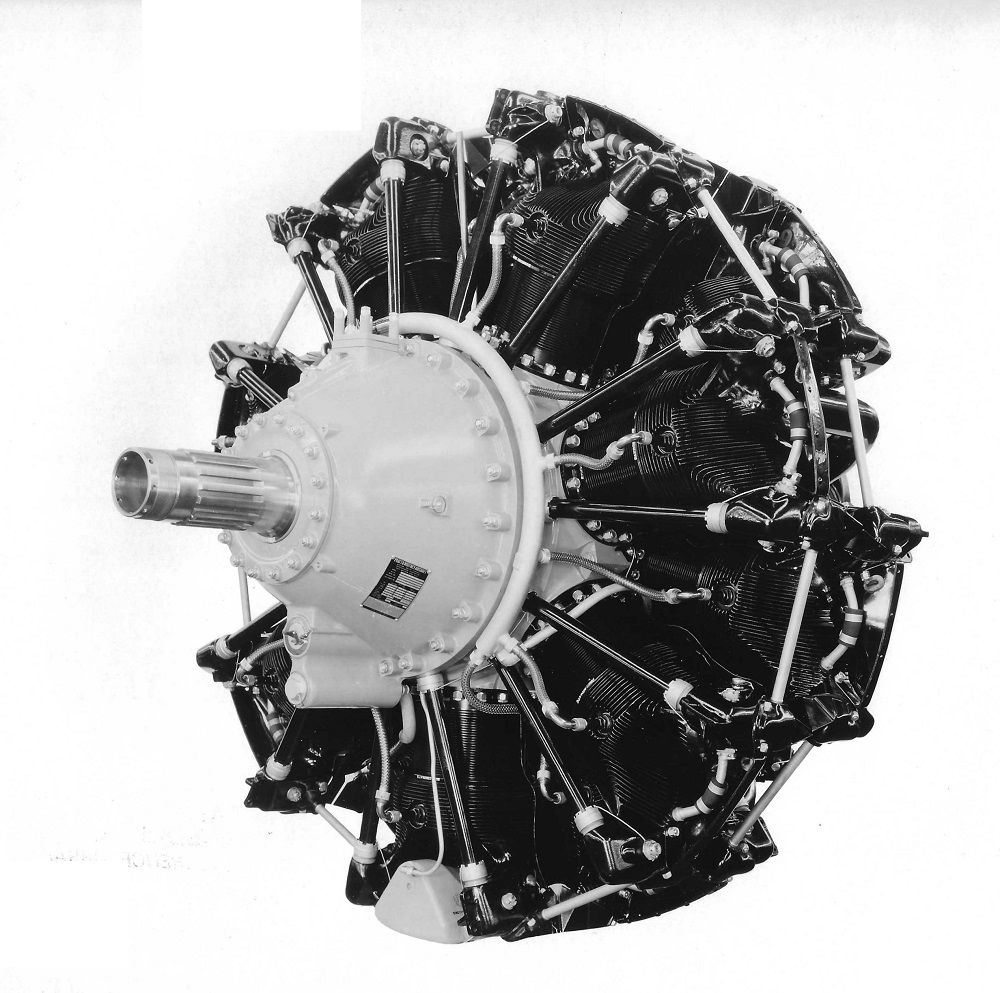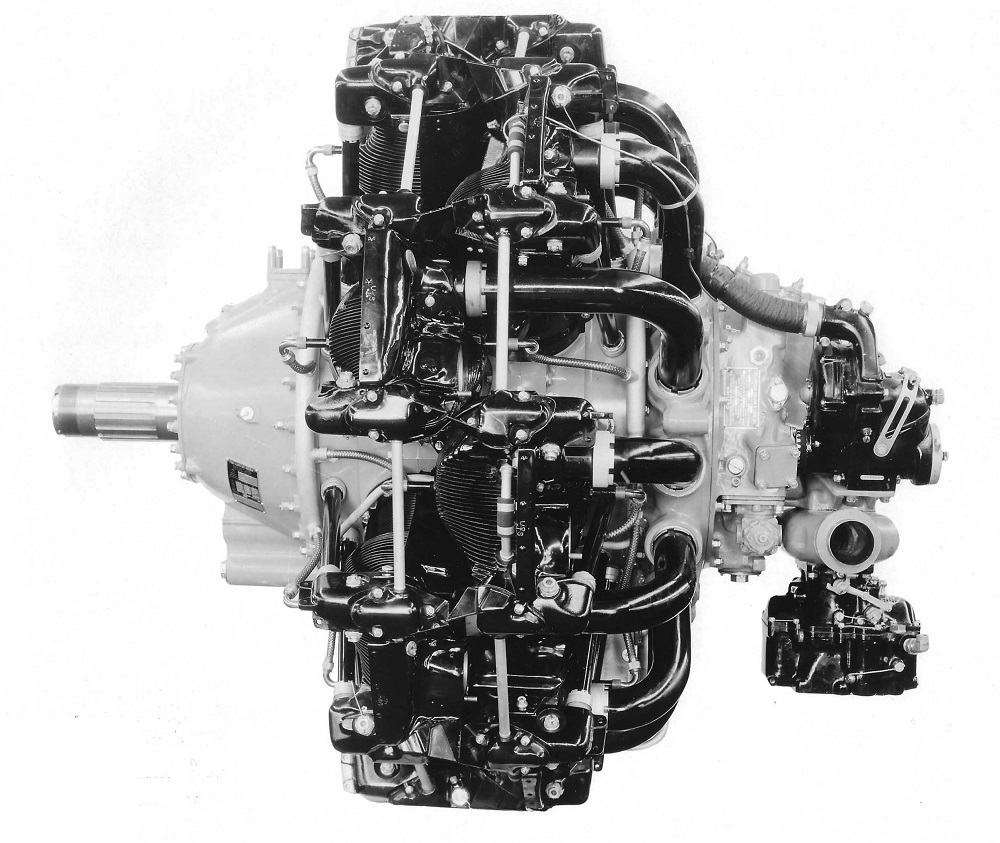
|
Pratt & Whitney R-1830 Twin Wasp |
|
| |
| |

The R-1830 Twin Wasp produced on average 1,200 hp. |
|
In the mid 1930s, Pratt & Whitney produced five basic engines:
The Pratt & Whitney R-1830 Twin Wasp was a 14 cylinder, double-row, air-cooled radial engine. Horsepower ranged from 800 hp to 1,350 hp depending on the model and configuration. More than 173,600 engines were produced and it was used in a range of aircraft that included the Douglas DC-3 DST, B-24 Liberator, Grumman F4F Wilcat and Curtiss P-36.
Development began in 1929 when Pratt & Whitney first began its double-row engine experimentation. The advantages of the double-row power plant for aircraft was a larger displacement with no increase in frontal area. Smaller cylinders could be used which permitted greater crank speeds creating smoother operation. The smaller, more frequent power impulses further contributed to smoothness and longer engine life.1
Pratt & Whitney saw the need at the time for the future requirements for both military and commercial service for more horsepower and foresaw the two-row type had possibilities for future development. Company engineers continued working on the development of larger models leading to the production of the R-2800 Double Wasp.2 |

(Photo: NEAM Ramsay Research Library) |
| Specifications: | |
|---|---|
| Pratt & Whitney R-1830-17 Twin Wasp | Date: | 1932 |
| Cylinders: | 14 |
| Configuration: | Double-row, Air-cooled radial |
| Horsepower: | 1,200 hp (895 kw) |
| RPM: | 2,600 |
| Bore and Stroke: | 5.5 in. (139.7 mm) x 5.5 in. (139.7 mm) |
| Displacement: | 1,829 cu. in. (30 liters) |
| Diameter: | 51 7/16 inches |
| Weight: | 1,250 lbs. (567 kg) |
Endnotes:
|
1. Howard Mingos, ed. The Aircraft Year Book for 1937. New York: Aeronautical Chamber of Commerce of America, Inc., 1937. 361. 2. Herschel Smith. A History of Aircraft Piston Engines. Manhattan, Kansas: Sunflower University Press, 1993. 119-120. |
Return To Engine Index.
© Larry Dwyer. The Aviation History On-Line Museum. All rights reserved.
Created September 26, 1996. Updated August 14, 2024.